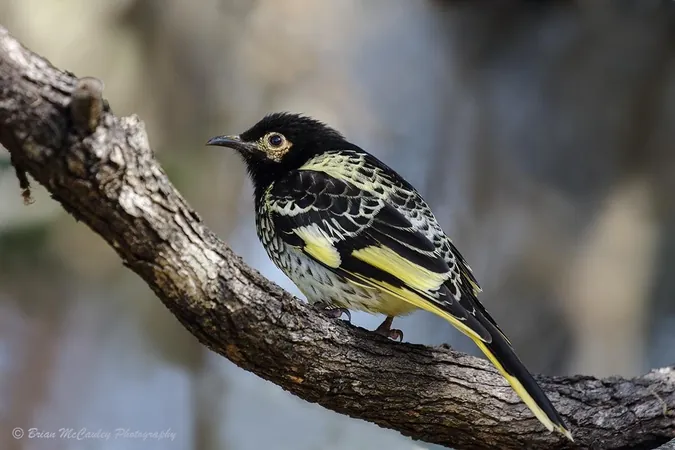
Silent Slumber: The Hidden Genetic Perils Facing Endangered Species
2025-04-28
Author: Olivia
A Troubling Trend in Biodiversity Loss
As global biodiversity faces a shocking decline, many species teeter on the brink of extinction. The World Wildlife Fund warns that this crisis, fueled by human activities—like habitat destruction driven by the relentless demand for resources and the ominous impacts of climate change—could jeopardize the survival of countless life forms across the planet.
The Overlooked Importance of Genetic Health
While conservation efforts often emphasize population numbers and immediate threats like habitat loss, they frequently overlook an equally crucial aspect: the genetic health of a species. How does a declining population impact genetic diversity? This question is now in the spotlight, thanks to the pioneering research by evolutionary biologist Hernán Morales from the University of Copenhagen.
A Case Study: The Regent Honeyeater
The regent honeyeater, a captivating songbird from southeastern Australia, illustrates the hidden issue of genetic erosion. Despite possessing what seems like sufficient genetic diversity, the species faces severe threats due to significant habitat loss and a perilously small population—now down to approximately 250 individuals.
Unearthing Genetic Erosion
Morales and his team scrutinized the genomes of both historic and contemporary regent honeyeaters to understand the genetic shifts that have transpired over the past century. Their findings revealed a concerning 9% reduction in genetic diversity, even as population numbers plummeted by a staggering 99%. This disconnect prompts urgent questions about the long-term viability of such species.
Forecasting Future Threats
The research also employed intricate species distribution models to forecast the regent honeyeater’s dwindling habitat suitability, particularly for breeding. Alarmingly, projections suggest that viable habitats may vanish by 2040. Coupled with ongoing genetic erosion, the species' ability to adapt to accelerating environmental changes hangs in the balance.
The Wider Implications for Conservation
The data from the regent honeyeater study could rewrite conservation strategies for other endangered birds experiencing similar genetic vulnerabilities. For instance, the Orange Bellied Parrot has shown a loss of over 60% in genetic diversity, leaving it susceptible to diseases that could decimate its population.
A Call to Action
Morales's findings serve as a stark reminder that traditional metrics of genetic health may provide a false sense of security. Conservationists must recognize that hidden genetic erosion can spell doom for species well before it becomes apparent. Long-term genetic monitoring must become a cornerstone of conservation strategies to preempt irreversible damage to at-risk populations.
The Road Ahead: Bridging the Gaps in Conservation
As we grapple with the dual challenges of ecological decline and genetic health, it's vital for scientists and conservationists to work hand in hand. By integrating ecological and genomic data, we can better anticipate the complex interactions that threaten species survival, fortifying efforts to take timely action.
In conclusion, the alarming disconnect between population health and genetic diversity must not be ignored. The fate of the regent honeyeater—and others like it—could well depend on our willingness to rethink our conservation strategies before it's too late.









 Brasil (PT)
Brasil (PT)
 Canada (EN)
Canada (EN)
 Chile (ES)
Chile (ES)
 Česko (CS)
Česko (CS)
 대한민국 (KO)
대한민국 (KO)
 España (ES)
España (ES)
 France (FR)
France (FR)
 Hong Kong (EN)
Hong Kong (EN)
 Italia (IT)
Italia (IT)
 日本 (JA)
日本 (JA)
 Magyarország (HU)
Magyarország (HU)
 Norge (NO)
Norge (NO)
 Polska (PL)
Polska (PL)
 Schweiz (DE)
Schweiz (DE)
 Singapore (EN)
Singapore (EN)
 Sverige (SV)
Sverige (SV)
 Suomi (FI)
Suomi (FI)
 Türkiye (TR)
Türkiye (TR)
 الإمارات العربية المتحدة (AR)
الإمارات العربية المتحدة (AR)